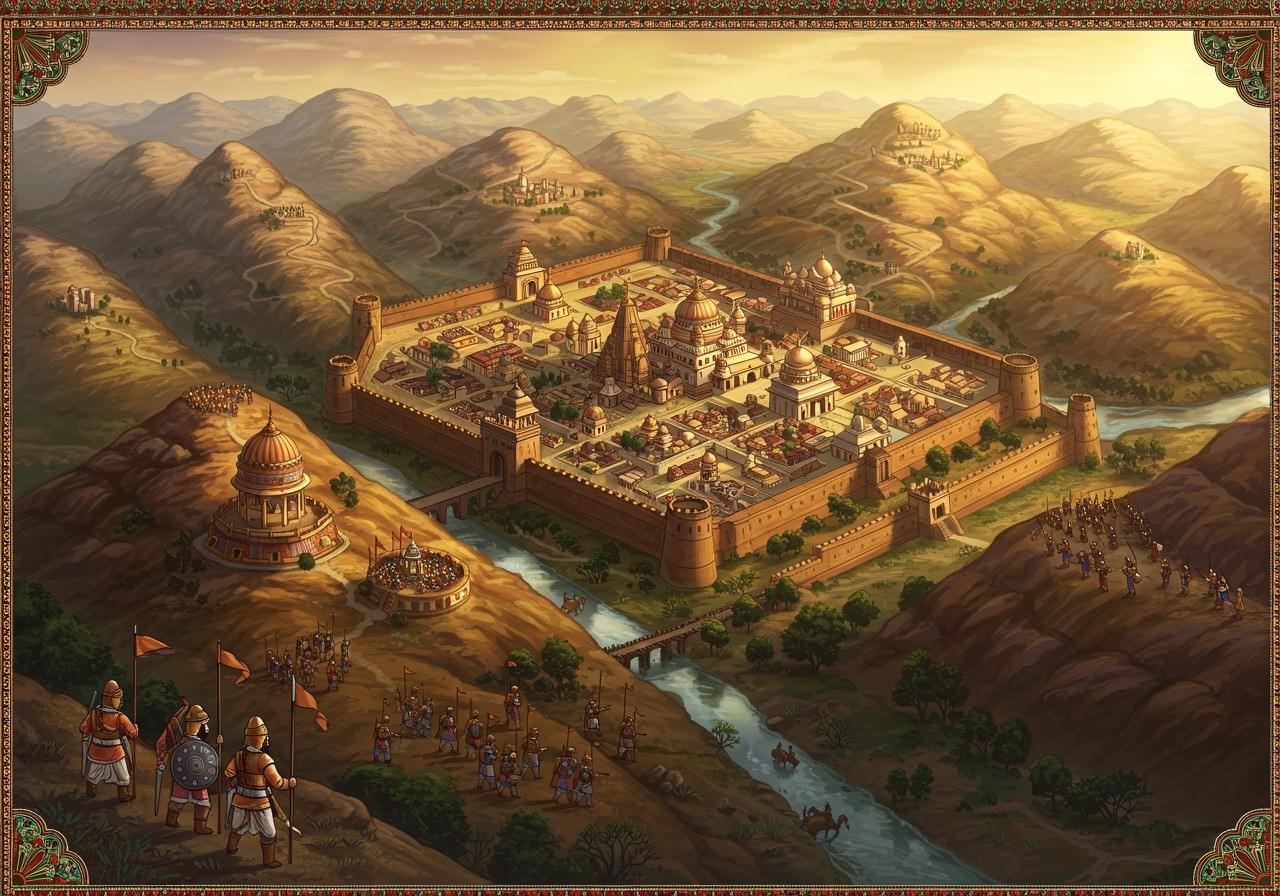
Rajagriha, nestled in Bihar, India, stands as a testament to ancient urban planning and defensive strategies. This historical city, crucial to India’s narrative, thrived as a fortified urban center, significantly impacting ancient defense systems. This article delves into Rajagriha’s strategic importance and defensive features that contributed to its prominence.
Geographical Advantages and Natural Fortifications
Rajagriha’s location within a valley encircled by five hills—Vaibhara, Ratna, Sona, Saila, and Udaya—provided natural defenses, much like how ancient Romans leveraged geography. These hills acted as barriers against invasions, enhancing the city’s defenses, reminiscent of how other civilizations used natural landscapes to their advantage.
- Proximity to rivers and fertile plains: These features supported agriculture and trade, crucial for economic stability. The reliable food and resource supply strengthened the city’s ability to withstand sieges.
- Natural terrain: The challenging terrain made surprise attacks difficult, providing a strategic advantage. This is comparable to how other ancient cities used natural obstacles to deter enemies.
- Elevation and topography: The elevated position offered vantage points for monitoring adversaries, much like how watchtowers were used in other ancient cities. The topography also provided natural surveillance opportunities.
- Surrounding forests and wildlife: These served as natural deterrents against enemy encroachment. The dense forests provided cover and resources, while also posing challenges for invading armies.
The Fortifications of Rajagriha
The architecture of Rajagriha’s fort showcased advanced defense mechanisms, echoing the sophistication seen in Babylonian double walls and other ancient fortifications. The fort’s strong stone and mud walls provided robustness against assaults, demonstrating a deep understanding of defensive construction techniques.
- Elaborate gateways and watchtowers: These were strategically placed for monitoring and controlling access, much like how gates were fortified in other ancient cities. The watchtowers served as crucial surveillance points.
- Multiple layers of walls: The layered walls created a complex defense system that was difficult to breach, similar to how other ancient civilizations used layered defenses to deter attackers. This made sieges more challenging and time-consuming.
- Hidden passages and escape routes: These routes were used for emergency evacuations and strategic maneuvers, comparable to the tunnels and hidden passages found in other ancient fortifications. They provided a crucial advantage in times of conflict.
- Water reservoirs and wells: Ensuring a continuous water supply during sieges was a key element of Rajagriha’s defenses, reflecting the importance of water management in ancient fortifications. This foresight allowed the city to withstand prolonged sieges.
- Traps and obstacles: Incorporating traps and obstacles into the fort’s design deterred and slowed down invading forces, similar to how other ancient civilizations used such tactics. These defensive measures added another layer of protection.
Rajagriha’s Strategic Landscape and Urban Planning
The surrounding landscape contributed to Rajagriha’s defense and sustainability. The five hills provided natural observation points and military advantages, echoing the strategic use of terrain seen in Roman defense systems.
Rajagriha’s urban planning reflected strategic and economic foresight. The city’s layout maximized defense and minimized vulnerabilities.
- Dense forests: Acted as natural barriers and sources of resources. The forests provided timber for construction, fuel, and food, while also hindering enemy movement.
- Terrain complexity: Made maneuvering large enemy forces challenging. The difficult terrain slowed down advancing armies, giving defenders more time to prepare.
Rajagriha’s Enduring Legacy
Rajagriha’s strategic location, robust defenses, and well-planned urban layout contributed to its prominence as a major political and cultural center. Its legacy continues to inspire modern urban planning, reflecting the wisdom of ancient city design.
For those seeking to connect with India’s rich cultural heritage, consider exploring the spiritual products available at Poojn.in. They offer a range of items for traditional practices and ceremonies.
Explore more about ancient Indian temples and their history through our articles on Badami Cave Temples, Bhoganandishwara Temple, and Kodandarama Temple.


